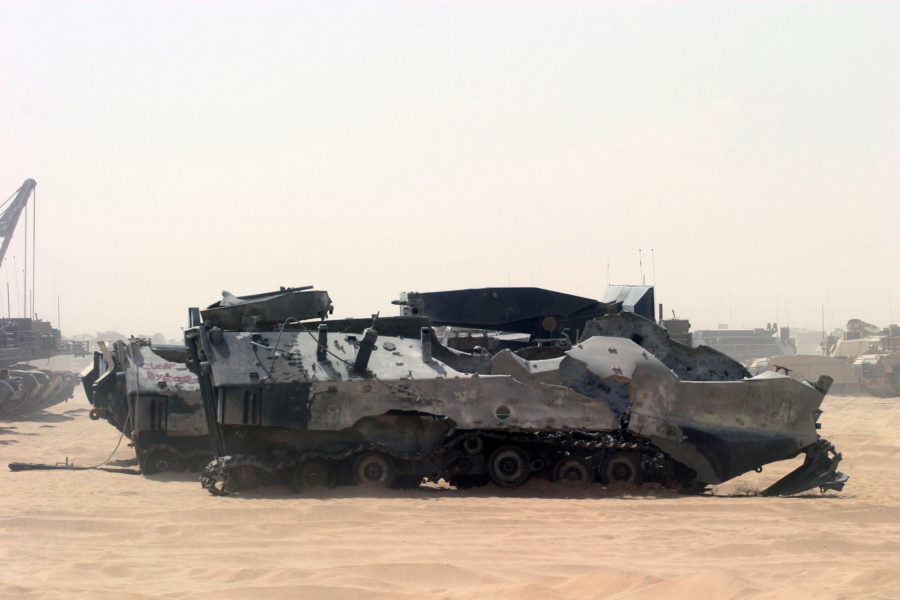Harry Lam
Journal Staff
The U.S. invasion of Iraq in 2003 and the occupation that followed is one of the most violent conflicts in the past decade. It was an invasion that was claimed by former U.S. President George W. Bush to topple a “ruthless” dictator who had weapons of mass destruction and to establish a peaceful “democracy” in Iraq.
Most of the public and U.S. media outlets never questioned the claims for war, but evidently also never questioned the possible consequences of such an invasion. To this day, most in the U.S. regret the invasion, but many do not know the exact details of the events and realities that occurred during the peak of the occupation.
Some of the truths of the Iraq War have remained a mystery until recently. In October, the organization, Wikileaks, leaked and publicized almost 400,000 secret U.S. military reports on Iraq that have become known as the Iraq war logs. The war logs contain, in detail, some of the most controversial issues and confirm several allegations by critics of the war.
U.S. and UK officials have stated there is no existence of an official record documenting the amount of civilian casualties. The leak has confirmed otherwise. The Iraq war logs report 109,032 deaths in Iraq made up of 66,081 civilians; 23,984 enemy insurgents; 15,196 Iraqi government forces and 3,771 friendly coalition forces. Over 60 percent of these deaths are civilian, which essentially means 31 civilians died each day during the six-year span of the war.
Another issue raised by the publishing of the documents is the deaths of civilians at U.S. military checkpoints. As many as 680 civilians were killed and about 2,000 wounded at these checkpoints. Some of these incidents resulted in the deaths of the mentally ill or even pregnant women who were being rushed to the hospital by their family members.
These kinds of incidents show that U.S. military forces have no hesitation to use deadly force. One case in the Iraqi war logs depicts when an Apache helicopter killed two men in February 2007. The insurgents had been trying to surrender, but the soldiers were told by a lawyer at the base, “You can’t surrender to an aircraft.”
The revealing of the secret U.S. documents also shows the U.S. military turning a blind eye to systematic torture conducted by the Iraqi security forces. The leaked documents confirm over 1,000 cases of abuse involving rape and prisoners shackled, hung by their ankles or wrists, or being subjected to punching, kicking, whipping, and electric shocks. Some of these tortures ended in death.
One incident occurred in August 2009 when a U.S. medical officer found “bruises and burns as well as visible injuries to the head, arm, torso, legs and neck” on the body of one man claimed by police to have killed himself.
In December 2008, another detainee, claimed by Iraqi police to have died of “bad kidneys,” was found to have “evidence of some type of unknown surgical procedure on his abdomen”.
The Iraqi war logs reveal other mysteries aside from casualties and the brutality of the U.S. military. One of such is the increased presence and influence of Al-Qaeda in Iraq only after the U.S. overthrew the Saddam government. The documents completely contradict the accusation by the Bush Administration that Al-Qaeda was present and being harbored in Iraq by Saddam Hussein’s government. Essentially the Iraq invasion that was part of the “war on terror” did more to encourage al-Qaeda activity in Iraq rather than thwart it.
Following the release of the Iraqi war logs by Wikileaks, U.S. officials continue to deny what is stated in their own military documents. The Obama administration also has not launched any form of investigation into these allegations while Britain and Denmark have already started looking into the actions of their own troops in Iraq.
The founder of Wikileaks, Julian Assage, said, “The only investigation to my knowledge that has been announced by the United States is into us, into possible sources within the U.S. military.”








